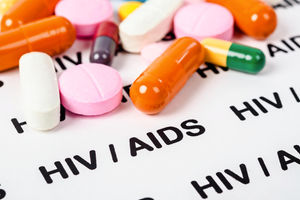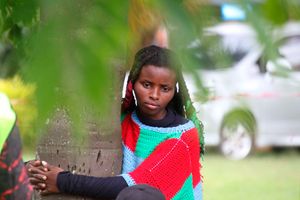What Kenya should do to address healthcare funding challenges

Malaria drugs. . A World Bank report published in 2019 suggested that even with the US government support, Kenya suffers significant funding gaps for HIV, TB, malaria, immunisation and reproductive health.
What you need to know:
- Many patients who are dependent on commodities and services supported by the US government have been left vulnerable.
The US President’s executive order on suspension of all foreign assistance globally for 90 days continues to cast a spotlight on the development sector and the longer-term sustainability of donor-supported programmes. In Kenya, the US government assistance has been a key plank in our health sector, supporting all areas from public health research, service delivery, including HIV services, health staff deployment and training as well as supporting policy and systems development.
So, what is at stake for the health sector budget, and how does the suspension affect Kenya’s universal health coverage goals?
Data from the Ministry of Health show that among donors that support health activities, the US government contributes the most funds. Over three financial years where data is available, the US government contributed more than 60 per cent of all the foreign aid to the health sector, and as high as 71 per cent in one year.
Strengthen systems
For the three years analysed (FY2016/2017, 2017/2018, 2018/2019), the data show that over 70 per cent of the funds received from the US government for the health sector was spent on HIV services.
A smaller proportion (30 per cent) went to funding TB, malaria and vaccines. The US government also supports Kenya to strengthen its health system by providing technical assistance, training for healthcare staff, and purchase of capital items. The funds are also used to pay healthcare workers hired to supplement the government staff, especially in hard-to-reach areas, and to purchase non-pharmaceutical commodities such as mosquito nets.
Withdrawal of this funding means that healthcare services will be severely affected, posing a threat to achieving the Universal Health Coverage goals, unless more funds are mobilised to plug in the gap. A World Bank report published in 2019 suggested that even with the US government support, Kenya suffers significant funding gaps for HIV, TB, malaria, immunisation and reproductive health. The shortfall ranged from USD 4.5 billion for HIV to USD 215 million for TB.
Many patients who are dependent on commodities and services supported by the US government have been left vulnerable. For instance, an estimated 1.3 million Kenyans living with HIV risk losing access to ARV treatment, and 1,602 orphaned and vulnerable children, who were supported by the US President’s Emergency Plan for AIDS Relief, risk abandonment. In addition, over 35,000 clinical workforces who are paid through the US government aid may be laid off.
On the other hand, the stoppage of US government support to health presents an opportunity for Kenya to reduce its vulnerability to external funding cuts and to build a more self-reliant and resilient healthcare system. One of the most critical steps is for the government to immediately increase domestic health financing through reallocation of more resources to health in the national and county budgets. Secondly, the government should expedite the integration of donor-dependent vertical programmes such as HIV into other routine services (such as outpatient services), to optimise the use of available limited resources. This would, for instance, eliminate the need for separate HIV clinics, laboratories, and staff, as the service can be offered in any of the other service points. These services should also be covered by the Social Health Authority.
In the medium term, the government should tap into the private sector to mobilise additional resources for healthcare delivery through public-private partnerships. Moreover, Kenya can explore appropriate and innovative financing mechanisms to generate revenue for healthcare. The government can also strengthen the Kenya Medical Supplies Authority to utilise its Supplementary Services Division window to provide affordable and quality health products to the private sector, with emphasis on non-communicable and neglected tropical diseases. This will increase the availability of lower cost and quality health products to the population able to buy, thereby allowing national and county governments to focus their resources to the needy populations.
Beyond funding, Kenya must also incentivise local manufacturing of pharmaceuticals to reduce reliance on expensive imported supplies. The government can also strengthen community-based healthcare by investing in primary health to lower the cost of care. Kenya should also seek to diversify international sources of funding to reduce overreliance on one donor.
Additional information by Dr David Njuguna, Dr Daniel Mwai, and Caroline Njoroge




